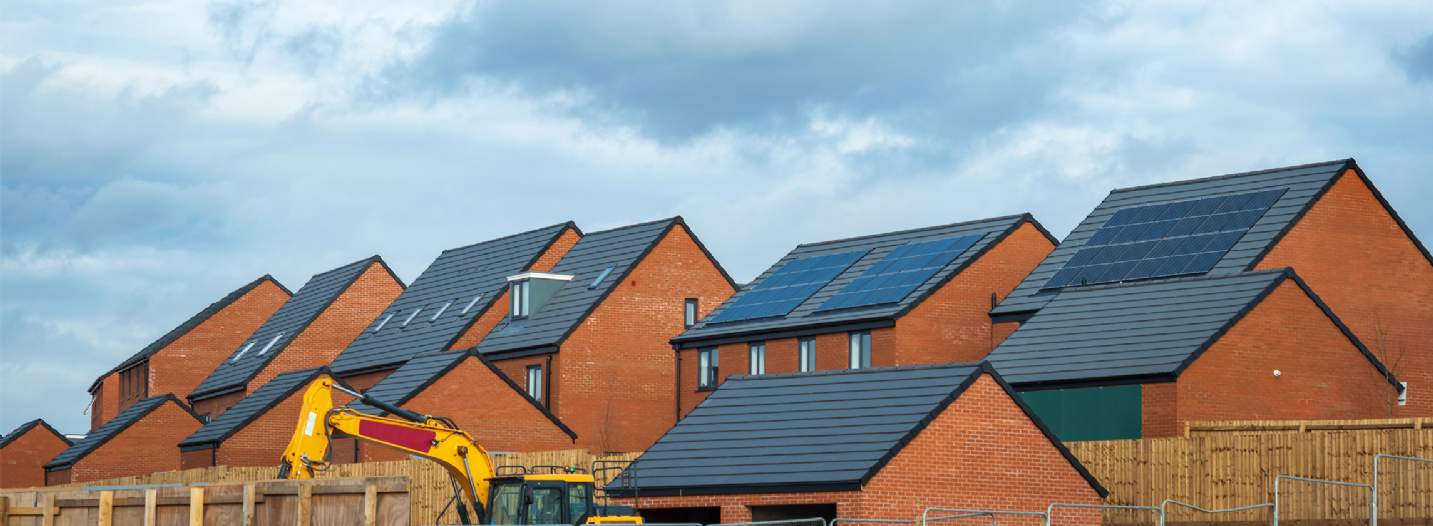Demand for new build homes remains, if the rates are right
The start of 2024 signalled a more upbeat new homes sales market as viewings and reservations picked up relative to last year. NHBC’s sentiment survey revealed a step change in demand (site visitors) across the country since the start of the year, reaching positive territory in March for the first time since the ‘mini-budget’ of September 2022.
Hot-off-the-mark buyers took advantage of falling mortgage rates in January and February. The average quoted rate on a two-year fixed mortgage at a 75% LTV dipped to 4.3% in January, almost 2% lower than the average rate of 6.2% at their peak in July 2023. As a consequence, net reservations spiked to a net balance of +21 in February relative to last year, according to NHBC, with Savills regional new homes sales also seeing an uptick in reservations.
Sales rates amongst major housebuilders have also improved; all housebuilders reporting figures in Q1 2024 saw increases compared to the second half of 2023. While buyers remain sensitive to mortgage rates and headline pricing, reliance on sales incentives amongst developers appears to be reducing, although agents note their ability to clinch deals where margins are tight.
Will there be enough homes to meet pent-up demand?
The flurry of activity at the start of the year demonstrates the depth of pent-up buyer demand that can be released when the cost of debt eases. The latest predictions are that the bank base rate will be cut within the next few months – with financial markets now pricing it in for August. Although the market may be stop-start until that point, a rate cut will likely result in more market activity in the second half of the year. Our longer-term outlook for the market expects increasing activity and capacity for price growth from 2025, helped by a stronger economic performance and a steady reduction in the bank base rate. Read our revised mainstream forecasts here.
But will the new homes market be ready for the recovery? We recently forecast that housing delivery in England is set to fall to its lowest level for a decade, with starts on sites on all homes (including affordable and rental homes) down -24%, while private units are down -27% in the year to Q1 2024 compared to 2023, according to NHBC data. All sizes of developers, from the top 10 to the smaller players, have seen a similar reduction in volume of plots starting on-site. While completions of new homes across England in 2023/24 looks likely to be down only slightly on the previous two years, the delayed impact of falling starts points towards an increasing shortage of new build homes in the near future.
London, Home Counties, part of Midlands and North all struggling to meet housing need
The drop in development activity is placing increasing pressure on markets that have already failed to meet housing need. The map highlights local authorities across England where completions of new homes in the year to Q1 2024 fell short of housing need (as defined by the standard method) and where the situation is not improving, or getting worse, based on number of planning consents. 35% of local authorities across England did not meet housing need over the past year, and their pipeline is shrinking. Clusters are most evident in London, much of the South East and parts of North. Data below from NHBC confirm that local authorities currently delivering below need and have a shrinking or flat pipeline have also seen a dramatic fall in starts over the past year in the wider area. Places such as Brighton and Hove, Medway and Kent, Surrey, Norfolk and Greater Manchester have all seen starts on site fall by over 40%.
Opportunity for developers: The metrics point toward distinct areas where there will be a shortage of homes and lack of competition in a couple of years’ time, just as the housing market is returning to growth. Developers with planning consent should push on with their sites in order to be best positioned to meet rising demand from buyers who will be eager to transact – as mortgage rates reduce to a more affordable threshold.
For more information, our research hub shares the latest data and expert insight into the residential development and investment markets
